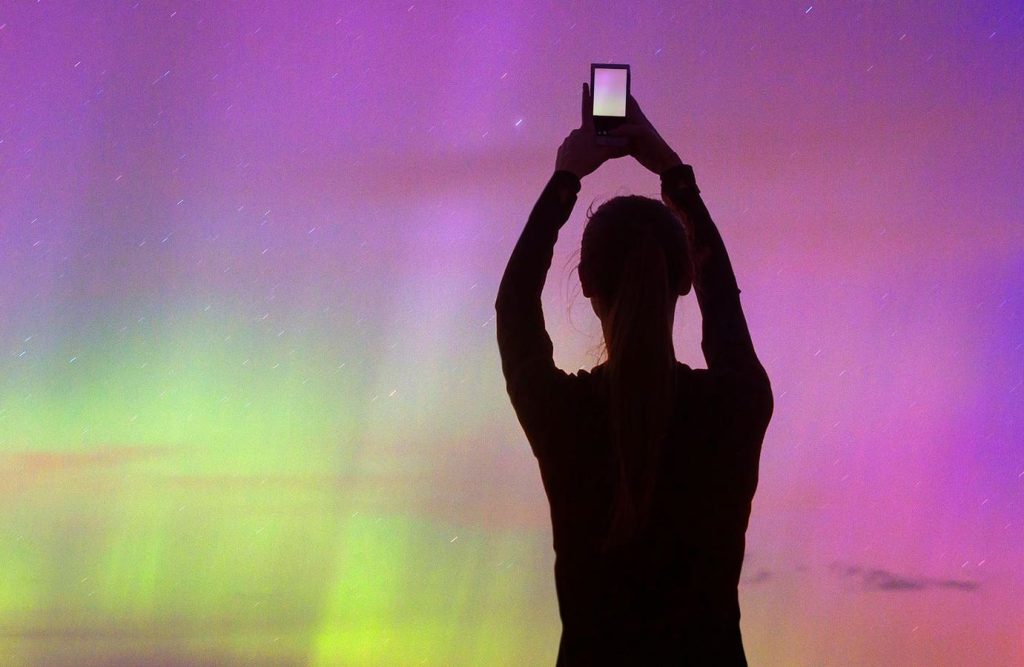A recent solar superstorm has led to stunning displays of aurora in locations far beyond the usual Arctic and Antarctic Circles. Many individuals have been able to capture these breathtaking sights using nothing more than a smartphone. With the potential for more displays in the near future, it’s important to understand how to properly photograph the aurora to capture its beauty.
For those using a smartphone to capture the northern lights, utilizing the device’s “Night Mode” feature can help achieve impressive results. This typically involves a long exposure of five to 10 seconds. It is important to use the primary lens, not the super-wide lens, to ensure better quality photos. Additionally, using a basic smartphone holder and tripod will help prevent camera shake and keep images sharp. Shooting in raw format will also make it easier to enhance photos through simple edits.
Those with a DSLR or mirrorless camera have more control over their aurora photographs. By adjusting the ISO, aperture, and shutter speed, individuals can capture the lights with greater detail and quality. A tripod is essential to prevent camera shake and boost image clarity. Shooting in raw format is recommended for easier post-processing. Using a wide-angle lens, focusing on infinity, using a low f-number to allow more light into the camera, and experimenting with different shutter speeds are all key tips for capturing the aurora.
When editing aurora photographs, it is important to avoid oversaturating colors. While it may be tempting to enhance the vivid reds and greens of the lights, oversaturation can make the image appear fake. By practicing restraint and maintaining a natural color balance, the true beauty of the aurora can be preserved in photographs. As more displays of the northern lights are expected, individuals are encouraged to venture out with their cameras and capture these awe-inspiring phenomena.


